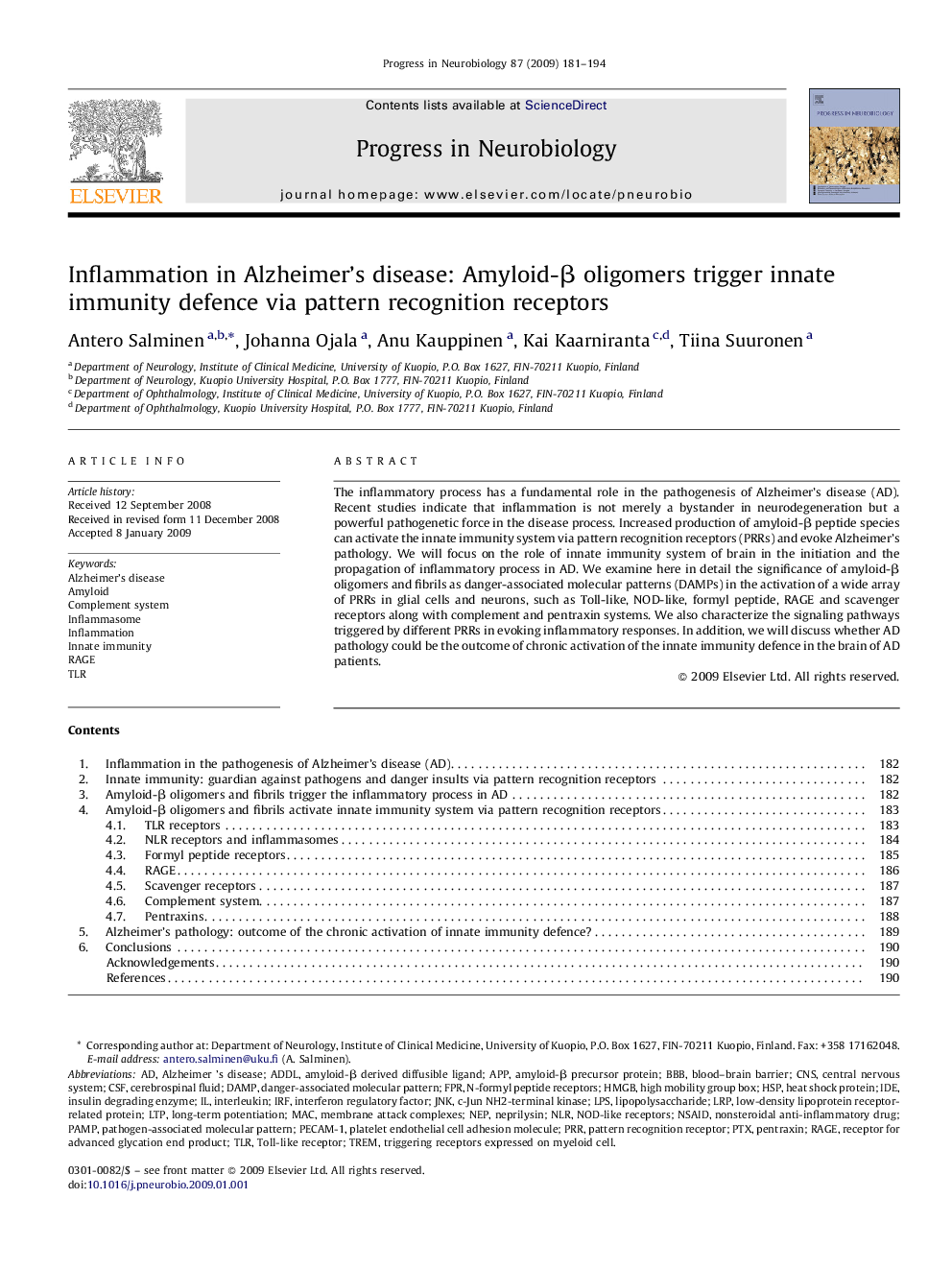| Article ID | Journal | Published Year | Pages | File Type |
|---|---|---|---|---|
| 4353857 | Progress in Neurobiology | 2009 | 14 Pages |
Abstract
The inflammatory process has a fundamental role in the pathogenesis of Alzheimer's disease (AD). Recent studies indicate that inflammation is not merely a bystander in neurodegeneration but a powerful pathogenetic force in the disease process. Increased production of amyloid-β peptide species can activate the innate immunity system via pattern recognition receptors (PRRs) and evoke Alzheimer's pathology. We will focus on the role of innate immunity system of brain in the initiation and the propagation of inflammatory process in AD. We examine here in detail the significance of amyloid-β oligomers and fibrils as danger-associated molecular patterns (DAMPs) in the activation of a wide array of PRRs in glial cells and neurons, such as Toll-like, NOD-like, formyl peptide, RAGE and scavenger receptors along with complement and pentraxin systems. We also characterize the signaling pathways triggered by different PRRs in evoking inflammatory responses. In addition, we will discuss whether AD pathology could be the outcome of chronic activation of the innate immunity defence in the brain of AD patients.
Keywords
TLRADDLreceptor for advanced glycation end productHMGBIRFPECAM-1NLRRAGEFPRc-Jun NH2-terminal kinasePRRPTXPAMPAPPHspLRPNSAIDDAMPJnkLPSAmyloidinsulin degrading enzymeInflammasomeinflammationDanger-associated molecular patternpathogen-associated molecular patternInnate immunityinterleukinIDEAlzheimer's diseaselong-term potentiationLTPToll-like receptornonsteroidal anti-inflammatory drugCNSComplement systemBBBBlood–brain barriercentral nervous systeminterferon regulatory factorTREMlipopolysaccharideCerebrospinal fluidCSFplatelet endothelial cell adhesion moleculeMACNEPNeprilysinHeat shock proteinLow-density lipoprotein receptor-related proteinamyloid-β precursor proteinPentraxinHigh mobility group boxNOD-like receptorsPRR, Pattern recognition receptor
Related Topics
Life Sciences
Neuroscience
Neuroscience (General)
Authors
Antero Salminen, Johanna Ojala, Anu Kauppinen, Kai Kaarniranta, Tiina Suuronen,
